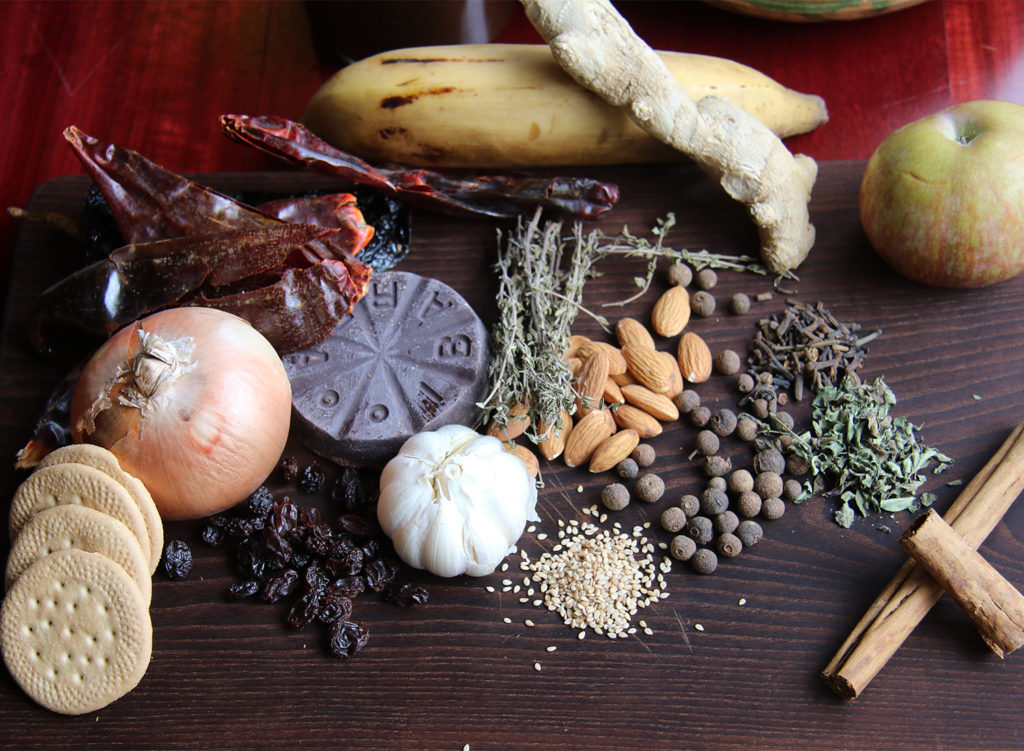Mole negro isn’t made in an afternoon.
One of the seven traditional moles of the Oaxaca region of Mexico, this sweet-savory sauce made with dried chiles, spices, seeds, tortillas and Mexican chocolate is a celebratory dish that once brought entire communities together in days long preparation.
“People make it in a day, but you really can’t if you do it right,” said Octavio Diaz, whose mother, Juana, has been making mole (pronounced MO-lay) at his restaurant, Agave Mexican in Healdsburg, for years. Her secret recipe also is used at the Diaz family’s Casa del Mole market where it’s served over burritos and freshly prepared for takeout.

With a laundry list of 30-plus ingredients — most of which require separate roasting or blanching or toasting — it’s a labor of love that’s been passed down from mother to daughter for generations.
“Mole connects people. There are so many spices, and you can break down walls through food,” said Octavio Diaz.
Unique to each of its creators, mole negro shares many foundational ingredients including ancho, poblano and/or guajillos chiles, Mexican chocolate and cinnamon, stale bread, tomatillos, plantain, oregano, raisins, pumpkin and sesame seeds, garlic, onions and cloves, traditionally. But improvisation and secret ingredients, of course, give the mole life: Sweet bread or animal crackers instead of stale bread for thickening, a ripe banana instead of the plantain, the addition of corn tortillas (a secret to Diaz’ mole).

“I can’t tell you everything,” said Diaz. Because like any great recipe, there are infinite secrets and traditions surrounding mole, all of which seem to contradict each other. No one, in fact, is quite sure what region of Mexico it originated in or who came up with the dozens of ingredients necessary to create this celebration dish. What they can agree on, however, is its importance in Mexican culture.
But the tradition is dying out, and real mole is a rare find at local taquerias despite the preponderance of great Mexican cooks in Sonoma County. At least the freshly made kind. Why? This is labor-intensive celebration food that’s more easily served from a can than slaved over for days.
Oaxaca is home to no less than seven different types of mole — some now say eight — ranging from red and green to dark brown depending on the ingredients. But most popular in American restaurants is mole negro, an exotic sauce that captures the imagination with ancient flavors of chocolate, smoked chiles and cinnamon.
So what does it taste like? It’s exotic, rich, earthy and unmistakable. Poured over poultry, it puddles and spreads across the plate-like a chocolate mudslide, and the absence of a single ingredient will alter it entirely. Not surprisingly, its sensuous richness serves as a backdrop to one of the most tender moments of Laura Esquivel’s book, “Like Water for Chocolate.” In it, the oppressed Tita makes a turkey mole for her nephew’s baptism, gently browning seeds and grinding spices for an entire day, in the process making her love, Pedro, wild with anticipation. Like wild.
With the opening of Casa de Mole in 2013 and the recent addition of Agave Uptown in Oakland, mole is becoming a true signature of the Diaz family, and now being made on a slightly larger scale that includes commercial bottling of the family’s secret sauce. Agave Uptown will have a mole ice cream, and Diazes’ new Kitchen 335 in Healdsburg includes a pork chop with mole negro sauce.
“For us, every day is a celebration,” said Diaz, “and there’s a story in each dish.”















